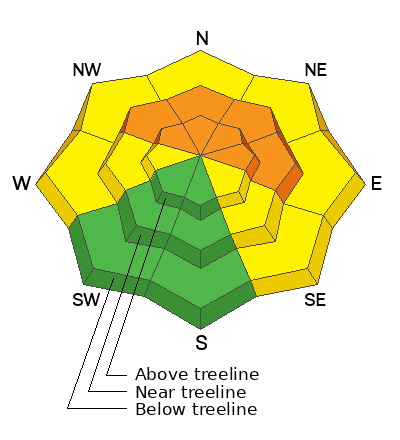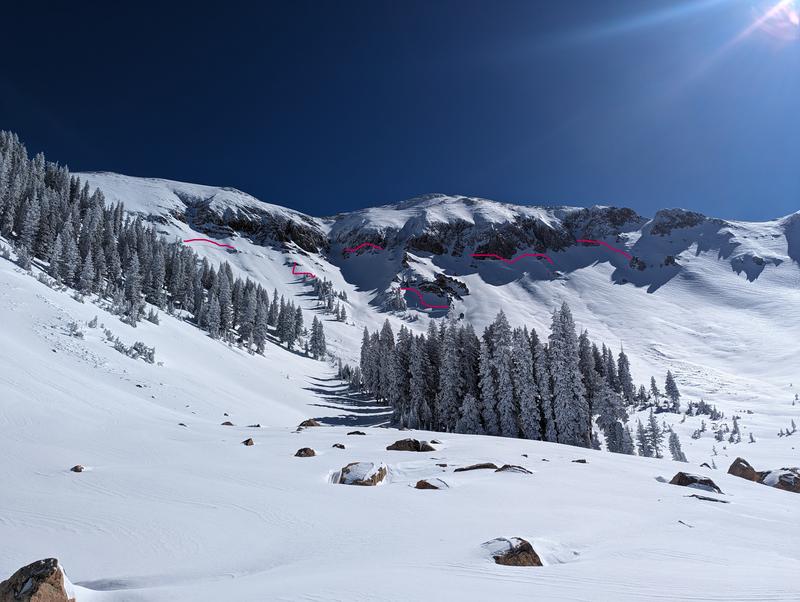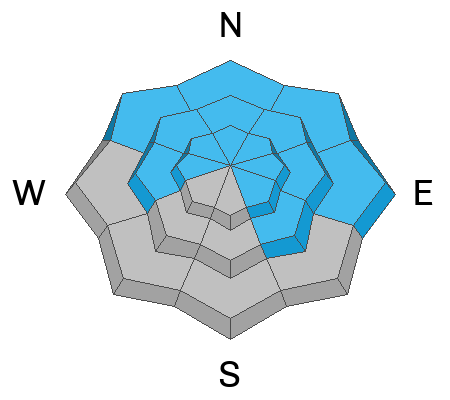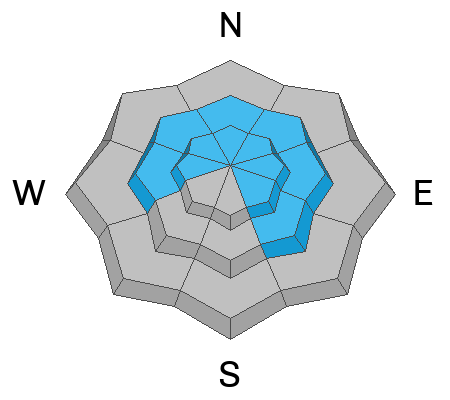Forecast for the Moab Area Mountains

Issued by Eric Trenbeath on
Monday morning, February 5, 2024
Monday morning, February 5, 2024
A CONSIDERABLE avalanche danger exists on steep northerly aspects near and above treeline. In these areas, slabs of wind drifted snow have overloaded an already stressed, buried persistent weak layer, and deep and dangerous human triggered avalanches are likely.
A MODERATE avalanche danger exists on steep slopes facing W and SE, and on lower elevation, northerly aspects. Deep and dangerous, human triggered avalanches failing on a buried persistent weak layer are possible in these areas. Likely trigger points are thinner snowpack areas along slope margins, shallow convexities, and areas of steep, rocky, radical terrain.
Most S and SW facing terrain offers LOW danger.

Low
Moderate
Considerable
High
Extreme
Learn how to read the forecast here









